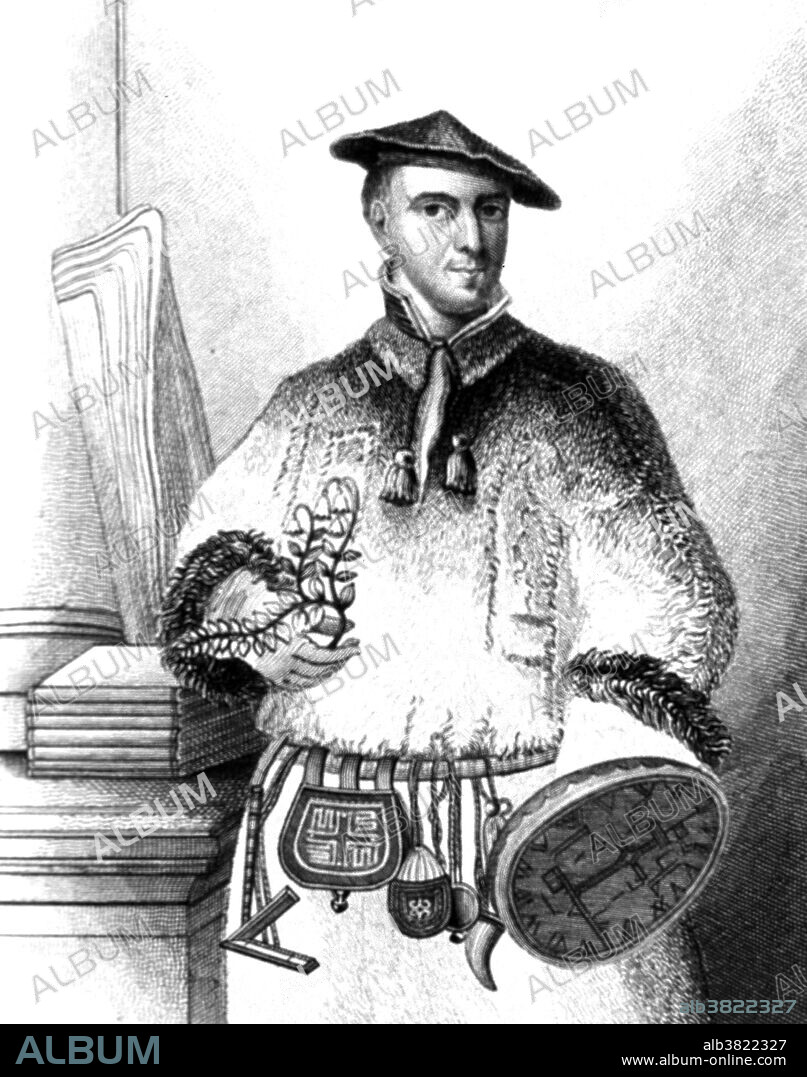alb3822327
Carl Linnaeus, Swedish Botanist, Father of Modern Taxonomy

|
Añadir a otro lightbox |
|
Añadir a otro lightbox |



¿Ya tienes cuenta? Iniciar sesión
¿No tienes cuenta? Regístrate
Compra esta imagen

Título:
Carl Linnaeus, Swedish Botanist, Father of Modern Taxonomy
Descripción:
Ver traducción automática
Linnaeus in the traditional dress of the Sami people of Lapland, holding the twinflower that became his personal emblem. Carl Linnaeus (May 23, 1707 - January 10, 1778) was a Swedish botanist, physician, and zoologist. He lived abroad between 1735-38 and published a first edition of his Systema Naturae in which he divided flowering plants into classes ordered according to the structure of their sexual organs. In 1749 he introduced the binomial nomenclature by which each plant was given a latin generic noun followed by a specific adjective. In the 1750s and '60s, he continued to collect and classify animals, plants, and minerals, and published several volumes. His last years were troubled by illness. He developed sciatica in 1773, and the next year, he had a stroke which partially paralyzed him. He suffered a second stroke in 1776, losing the use of his right side and leaving him bereft of his memory; while still able to admire his own writings, he could not recognize himself as their author. At the time of his death, in 1778 at the age of 70, he was one of the most acclaimed scientists in Europe. Today he is known as the father of modern taxonomy, and one of the fathers of modern ecology.
Crédito:
Album / NLM/Science Source
Autorizaciones:
Modelo: No - Propiedad: No
¿Preguntas relacionadas con los derechos?
¿Preguntas relacionadas con los derechos?
Tamaño imagen:
3000 x 3806 px | 32.7 MB
Tamaño impresión:
25.4 x 32.2 cm | 10.0 x 12.7 in (300 dpi)
Palabras clave:
1707 • 1735 • 1778 • BLANCO Y NEGRO • BOTANICA • BOTANICO (PERSONA) • CIENCIA • EUROPEO • FAMOSO • FIGURA • GENTE • HISTORIA • HISTORICO • HOMBRE • HOMBRES • IMPORTANTE • MASCULINO • MEDICINA • MEDICINAL • PERSONA • PERSONALIDAD • PERSONALIDADES • RETRATO DE HOMBRE • SIGLO XVIII • SUECO • TAXONOMIA • VESTIDO TRADICIONAL • ZOOLOGIA • ZOOLOGO
 Pinterest
Pinterest Twitter
Twitter Facebook
Facebook Copiar enlace
Copiar enlace Email
Email
